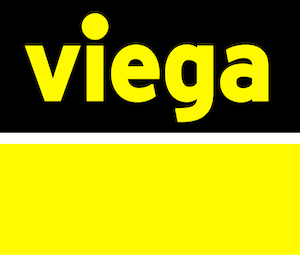Each year, as part of the Giants 300 survey, we ask the nation’s largest engineering and engineering/architecture firms to pinpoint their most significant business moves within the past 12-18 months. Cited most often this year: “added a new service” and “tech innovations.”
 The 2019 Engineering Giants Report is sponsored by Viega. Also check out the Top 80 Engineering Firms and Top 40 Engineering Architecture Firms rankings, brought to you by Viega.
The 2019 Engineering Giants Report is sponsored by Viega. Also check out the Top 80 Engineering Firms and Top 40 Engineering Architecture Firms rankings, brought to you by Viega.
Here’s a recap of the top business innovations from the 2019 Engineer Giants:
• AE Works added Security Risk Management services to help clients balance operational needs and organizational culture with security solutions. Services include security compliance audits, building design review, security system design, and facility/campus security assessments.
• Burns & McDonnell launched an innovation incubator, Ignite, focused on researching and developing ideas for business lines or new approaches to serving clients. Similar to “Shark Tank,” teams of Burns & McDonnell professionals develop and pitch ideas that can receive funding for further development. The current round is focused on artificial intelligence, machine learning, advanced analytics, business intelligence, and robotics.
• Core States Group expanded its service offerings to meet client demand, including in-house production of custom electrical interconnection points (known as bus connections) for battery storage, fuel cell, and solar array applications; and signage design and fabrication and brand management services.
• Davis, Bowen & Friedel added in-house drone services to provide more efficient, safer, and cost-effective drone-based aerial data collection.
• dbHMS expanded its Building Envelope Commissioning practice to meet growing demand for these services. The firm also integrated its High-Performance Simulation Practice with its MEP Design Practice to help improve the actual performance of buildings over the modeled performance, and to reduce the duration for commissioning for efficiency and thermal comfort.
• Epstein is employing advanced modular construction techniques for a 25-story hotel in Manhattan. The modules are being mass-produced, staged for convenient access, and then will be constructed to a higher standard before delivery to the jobsite.
• EYP Mission Critical Facilities, formerly a wholly owned subsidiary of a global public IT company, is now an independent firm and has expanded its range of services for its data center and mission critical facility clients, from consulting, to engineering, to commissioning and operations.
• Fluor partnered with IBM to develop artificial intelligence-based tools to predict, monitor, and measure the status of engineering, procurement, fabrication, and construction of its mega-projects. The firm’s new EPC Project Health Diagnostics (EPHDsm) and Market Dynamics/Spend Analytics (MD/SAsm) tools are powered by IBM Watson, and help identify dependencies and provide actionable insights by fusing thousands of data points across the entire life cycle of capital projects.
• Halff Associates developed a high dynamic deep locating (HDDL) system that allows the firm’s subsurface utility engineers to designate a utility more than 40 feet underground. Standard locating equipment is typically only effective for depths of 10 to 15 feet.
• Integral Group launched “Fresh Voices,” a retreat for employees from across the company to provide a diverse conversation both from local experience and global context. Participants produced a report that was shared firm wide to maximize the impact of the workshop.
• Jaros, Baum & Bolles expanded its adoption of direct outside air system (DOAS) technology for commercial office retrofit and repurposing projects in the New York City market. The installations utilize overhead chilled-water, fan-powered terminal units.
SEE ALSO: Top 80 Engineering Firms for 2019
SEE ALSO: Top 40 Engineering Architecture (EA) Firms for 2019
• kW Mission Critical Engineering added telecommunications design, based on demand from its data center clients. Its RCDD-certified telecom engineers work with kW’s in-house MEP/FP engineers and external consultants to coordinate telecom design with power distribution, hot/cold aisle containment, and liquid cooled piping to reduce delivery times and lower design and construction costs.
• KLH Engineers is using Python, a multi-paradigm programming language, to create machine learning models to more efficiently bridge the gap between AutoCAD and Revit. The firm is exploring other machine learning applications, as well, including mapping building types with corresponding HVAC system types.
• Magnusson Klemencic Associates’ nonprofit research arm, MKA Foundation, has signed on with the Charles Pankow Foundation as a funding partner on several of CPF’s research initiatives. MKA Chairman and CEO Ron Klemencic, PE, SE, is a long-running member of the CPF Board of Directors.
• Martin/Martin Consulting Engineers expanded its specialty engineering services through its Construction Engineering Services (CES) group. The CES team assists contractors—particularly on design-build and integrated project delivery projects—with their on-site engineering needs, including enhanced fabrication drawings.
• Thornton Tomasetti’s innovation investment arm, TTWiiN Investment Partners, invested in XtreeE, a Paris-based technology company focusing on large-scale 3D printing solutions for the AEC industry. XtreeE was founded in 2015 and is at the forefront of large-scale additive manufacturing, primarily in concrete.
• Woolpert combines the use of aerial thermal imagery of buildings with property and utility data to create a “heat score map,” a visual depiction of the thermal losses of structures. The firm hosts its heat score maps on a custom-designed Web portal, SmartView Connect, which can present a side-by-side comparison of buildings and homes across a community or neighborhood.
• WSP USA aims to become carbon neutral across its U.S. operations in 2019. The initiative pertains to all U.S. offices and employee business travel. WSP will manage and reduce its own greenhouse gas impacts through energy efficiency, transportation, and travel efficiency. It will also source renewable energy and pursue high-impact carbon offsets. The firm’s sustainability actions include waste and water management, procurement, the health and wellness of its staff, and community engagement.
MORE FROM BD+C'S 2019 GIANTS 300 REPORT
Related Stories
Giants 400 | Sep 17, 2015
CONVENTION CENTER SECTOR GIANTS: Gensler, AECOM, Turner top rankings of nation's largest convention/events sector AEC firms
BD+C's rankings of the nation's largest convention/events sector design and construction firms, as reported in the 2015 Giants 300 Report.
Giants 400 | Sep 17, 2015
AIRPORT SECTOR GIANTS: KPF, Hensel Phelps, Jacobs top rankings of nation's largest airport terminal sector AEC firms
BD+C's rankings of the nation's largest airport terminal sector design and construction firms, as reported in the 2015 Giants 300 Report.
Giants 400 | Sep 15, 2015
HOTEL SECTOR GIANTS: Gensler, AECOM, Turner among nation's largest hotel sector AEC firms
BD+C's rankings of the nation's largest hotel sector design and construction firms, as reported in the 2015 Giants 300 Report.
Giants 400 | Sep 10, 2015
INDUSTRIAL SECTOR GIANTS: Stantec, Turner, Jacobs among top industrial AEC firms
BD+C's rankings of the nation's largest industrial sector design and construction firms, as reported in the 2015 Giants 300 Report
Giants 400 | Sep 10, 2015
MILITARY SECTOR GIANTS: Clark Group, HDR, Fluor top rankings of nation's largest military sector AEC firms
BD+C's rankings of the nation's largest military sector design and construction firms, as reported in the 2015 Giants 300 Report
Giants 400 | Sep 8, 2015
RETAIL SECTOR GIANTS: Callison RTKL, PCL Construction, Jacobs among top retail sector AEC firms
BD+C's rankings of the nation's largest retail sector design and construction firms, as reported in the 2015 Giants 300 Report
Giants 400 | Aug 7, 2015
GOVERNMENT SECTOR GIANTS: Public sector spending even more cautiously on buildings
AEC firms that do government work say their public-sector clients have been going smaller to save money on construction projects, according to BD+C's 2015 Giants 300 report.
Giants 400 | Aug 7, 2015
K-12 SCHOOL SECTOR GIANTS: To succeed, school design must replicate real-world environments
Whether new or reconstructed, schools must meet new demands that emanate from the real world and rapidly adapt to different instructional and learning modes, according to BD+C's 2015 Giants 300 report.
Giants 400 | Aug 7, 2015
MULTIFAMILY AEC GIANTS: Slowdown prompts developers to ask: Will the luxury rentals boom hold?
For the last three years, rental apartments have occupied the hot corner in residential construction, as younger people gravitated toward renting to be closer to urban centers and jobs. But at around 360,000 annual starts, multifamily might be peaking, according to BD+C's 2015 Giants 300 report.
Giants 400 | Aug 7, 2015
UNIVERSITY SECTOR GIANTS: Collaboration, creativity, technology—hallmarks of today’s campus facilities
At a time when competition for the cream of the student/faculty crop is intensifying, colleges and universities must recognize that students and parents are coming to expect an education environment that foments collaboration, according to BD+C's 2015 Giants 300 report.
















